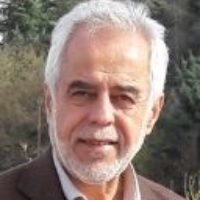Spatial analysis of activity accumulation and distribution patterns in the urban network of Khuzestan province
Recognizing the function and pattern of urban network activity in regional areas to identify potentials and assets correctly leads to effectively guiding spatial planning for achieving creative competitiveness and spatial balance at the regional level. The current research attempts to analyze the spatial pattern of activity accumulation and distribution in the urban network of Khuzestan province using a practical and developmental approach, along with a descriptive-analytical method. Activity and employment statistics of 78 urban points in the province, based on data from the Iranian Statistics Center and the regional survey plan of Khuzestan province, have been cited.The results from spatial autocorrelation analysis and the z-score function, as well as the Repilli k function, show that activities related to the agricultural sector have a cluster distribution pattern in the urban network of the province. On the other hand, the activities of the industry and service sectors in the province follow a scattered pattern. Spatial analysis of the activities in the urban network of the province indicates that due to the proximity of cities to each other and the close employment statistics in each of the agricultural, industrial, and service sectors, the northern parts of the province and the southern part (specifically the ports of Imam and Bandar Mahshahr) show the most areas related to hot spots from an activity point of view. Meanwhile, the service function in the urban network of the province, despite having significant employees, exhibits the most cold spots and dispersion, especially in the central areas of the province.
-
The role of good urban governance on sustainable tourism incomes in Ahvaz city
Salman Izdenjad, *
Journal of Geography and Human Relations, Spring 2025 -
Identification of optimal institutional capacity sensors; In order to evaluate the realization of smart city (Case study: Ahvaz metropolis)
Mahyar Sajadian*, Mohammadali Firoozi, Ahmad Pourahmad
Geographic Space, -
Structural analysis of key drivers affecting water stress in Iranian cities (Study case: Ahvaz metropolis)
*, Hoshang Moradi, Saeid Amanpour
Journal of Future Cities vision, Autumn 2024 -
Codification of Effective Scenarios for the Development of Informal Settlements in Ahvaz with Emphasis on the Application of Futures Studies
Nadia Daripour, Mohammadali Firouzi *, Majid Goudarzi
Journal ofof Regional Planning,



